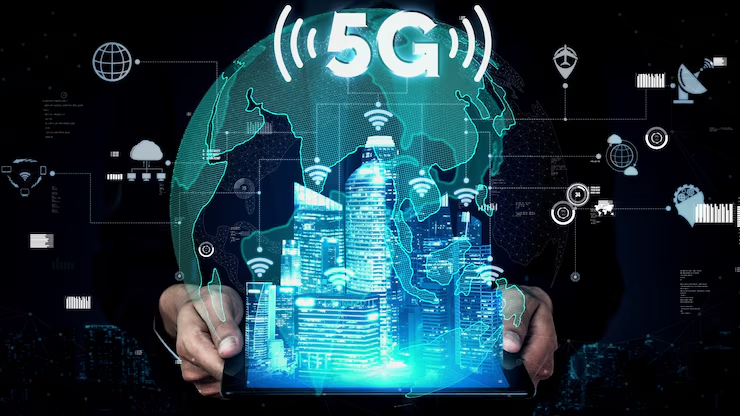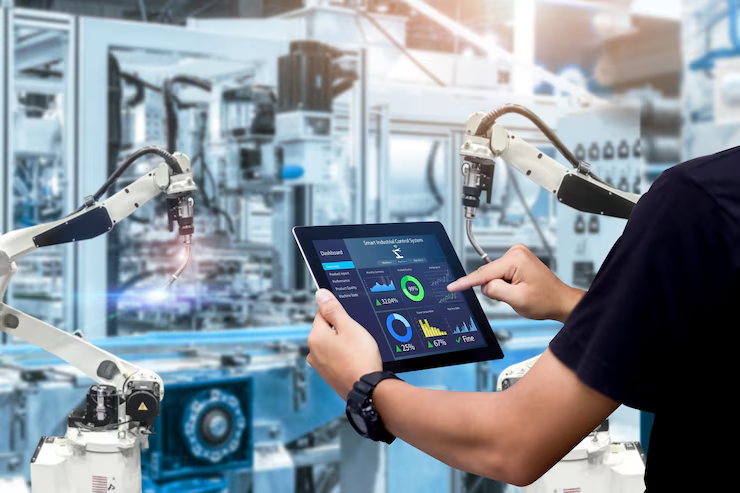5G Technology: The Future of Connectivity
In an era where connectivity is at the heart of technological advancement, the demand for faster, more reliable, and higher-capacity networks is growing exponentially. Enter 5G, the fifth generation of wireless communication technology, which promises to revolutionize the way we live, work, and interact with the digital world.
5G is not just an upgrade to its predecessor, 4G—it represents a monumental leap in wireless communication.
In this article, we delve deep into the world of 5G: what it is, how it works, why it matters, the industries it will transform, and the challenges it must overcome to reach its full potential.

What is 5G?
Key Features of 5G:
-
Enhanced Mobile Broadband (eMBB): High-speed internet access, video streaming, and virtual/augmented reality experiences.
-
Ultra-Reliable Low Latency Communications (URLLC): Applications requiring real-time response like autonomous vehicles and remote surgeries.
-
Massive Machine Type Communications (mMTC): Seamless connectivity for billions of IoT devices.
The Evolution of Wireless Networks

To understand 5G’s importance, it’s helpful to look at the progression of mobile communication technologies:
| Generation | Introduced | Key Features |
|---|---|---|
| 1G | 1980s | Analog voice |
| 2G | 1990s | Digital voice, SMS |
| 3G | Early 2000s | Mobile internet, video calling |
| 4G/LTE | Late 2000s | High-speed internet, HD streaming |
| 5G | 2019–present | Ultra-fast data, low latency, IoT support |
Each generation marked a significant step forward in mobile capabilities. is not merely a continuation—it’s a paradigm shift.
How 5G Works
5G technology uses radio frequencies—part of the electromagnetic spectrum—to transmit data. What sets 5G apart is its ability to use three distinct frequency bands:
Technologies Enabling 5G:
-
Massive MIMO (Multiple Input Multiple Output): Multiple antennas on base stations to handle more simultaneous connections.
-
Beamforming: Directs signals precisely to devices, improving efficiency and reducing interference.
-
Edge Computing: Processes data closer to the user, reducing latency and bandwidth usage.
5G Benefits of 5G
capabilities extend far beyond faster mobile downloads. Here are the primary advantages:
2. Ultra-Low Latency
Latency as low as 1 millisecond makes real-time interactions possible—vital for applications like autonomous vehicles and remote surgeries.
3. Greater Connectivity
5G can support up to 1 million devices per square kilometer, making it ideal for IoT.
4. Higher Capacity
Supports more simultaneous users and devices, reducing network congestion.
5. Energy Efficiency
Advanced protocols and smart resource management lead to better battery life and lower power consumption.
5G Real-World Applications of 5G
is a foundational technology with far-reaching implications. Here’s how it’s transforming various industries:
1. Healthcare
-
Remote Surgery: Surgeons can operate robotic systems in real time from different parts of the world.
-
Telemedicine: High-quality video consultations and diagnostics.
-
Wearables: Continuous health monitoring and real-time data sharing.
2. Automotive and Transportation 5G
-
Autonomous Vehicles: Real-time communication with other vehicles and infrastructure.
-
Traffic Management: Smart traffic lights, incident detection, and route optimization.
-
Fleet Management: Efficient vehicle tracking and predictive maintenance.
3. Manufacturing
-
Smart Factories: Real-time control of machinery, predictive maintenance, and quality assurance.
-
AR/VR for Training: Immersive employee training with real-time guidance.
4. Smart Cities
-
Energy Grids: Optimized energy usage and load balancing.
-
Public Safety: Surveillance, emergency response coordination, and disaster management.
-
Waste Management: Sensor-enabled bins and optimized collection routes.
5. Entertainment and Media
-
Immersive Experiences: VR and AR gaming with real-time interactions.
-
Live Streaming: High-definition video without buffering.
-
Cloud Gaming: No need for powerful local hardware.
6. Agriculture
-
Precision Farming: Real-time soil and crop monitoring.
-
Drones: Automated crop spraying and surveillance.
5G Global Rollout and Adoption
5G is being deployed at different speeds across the globe. Key players in the 5G race :
-
South Korea: Among the first to offer nationwide.
-
United States: Rapid deployment in urban areas by major telecoms.
-
China: Significant investment in 5G infrastructure and innovation.
-
Europe: Gradual rollout with emphasis on regulatory compliance and cross-border collaboration.
5G and Developing Countries:
Challenges of 5G Implementation 5G
1. Infrastructure Costs
Deploying 5G requires substantial investment in new towers, base stations, and fiber-optic networks.
2. Spectrum Availability
Limited and expensive spectrum licenses can delay rollout.
3. Security Risks
The increased number of connected devices poses greater risks for cyberattacks and data breaches.
4. Health Concerns and Misinformation
5. Interference with Devices
High-band frequencies are easily disrupted by buildings, trees, and weather.
6. Device Compatibility
Users need devices to access the network, and widespread adoption depends on affordability.
5G vs 4G: A Comparison
| Feature | 4G LTE | 5G |
|---|---|---|
| Speed | Up to 100 Mbps | Up to 10 Gbps |
| Latency | ~50 ms | ~1 ms |
| Device Support | 10,000/km² | 1 million/km² |
| Bandwidth | Limited | Massive |
| Use Cases | Mobile internet | Smart everything |
. From smart homes to industrial automation, capabilities are essential for real-time data exchange, device interoperability, and scalable connectivity.
Key Applications:
-
Smart Homes: Appliances, security systems, and utilities connected for seamless control.
-
Smart Grids: Real-time energy demand management.
-
Connected Wearables: Fitness, health, and lifestyle devices.
-
Industrial IoT (IIoT): Robotics, sensors, and automated systems.
Future Outlook: What’s Next for 5G?
As 5G matures, several innovations are on the horizon:
1. 6G Research
Initial research into 6G is underway, with goals of terabit speeds and real-time AI-driven networks by 2030.
2. AI and Automation
AI-powered 5G networks will enable self-optimizing systems, predictive maintenance, and intelligent traffic management.
3. Integration with Satellite Internet
Low Earth Orbit (LEO) satellites, like those from SpaceX and Amazon, will complement to provide global coverage.
4. Regulatory and Standardization Efforts
International collaboration will ensure interoperability, security, and equitable access.
Conclusion
With its unprecedented speed, low latency, and massive connectivity, will unlock a new era of innovation, from autonomous vehicles and smart cities to immersive entertainment and telehealth.



Hi,
I checked your website and noticed a few issues that might be hurting your Google rankings — like:
Low visibility for key search terms
Weak or missing Calls-to-Action (CTAs)
Slow page speed or lack of mobile optimization
These gaps often lead to missed traffic, fewer leads, and lower conversions.
I’d love to offer you a SEO + CTA audit to identify what’s holding your site back — and how to fix it.
Should I send the report over this week?
Thank you,
Manshi
Hi,
I’m Kanak, a digital marketing expert with over a decade of experience in SEO, Google Ads, and conversion optimization.
I help businesses like yours boost their online visibility, rank higher in search results, and convert visitors into paying customers.
If you’re open to it, I’d love to take a quick look at your website and send you a custom growth.
Let me know your website URL and target audience.
Best regards,
Kanak
Hi,
Are you looking to increase your website traffic and drive more sales and leads?
I’m Gaurav, an SEO strategist with 12 years of experience in SEO, PPC and Facebook Ads. I help businesses like yours rank on the first page of Google and turn traffic into revenue with tailored SEO strategies.
If you’re interested, just share your website and target keywords, I’ll send over a personalized SEO proposal to get started.
Looking forward to helping your business grow!
Best regards,
Gaurav Pathak
Hi,
Could you please tell me if you want to show your website on top in Google searches and to increase organic traffic on your website.
We are a digital marketing company that deals in SEO and we can bring your website to the first page of Google as we are helping more than 100+ websites to get them top in Google.
Please let me know if you would like to discuss this opportunity.
If you are interested, I can send you our past work, pricing and proposals.
Thank you,
Nikita